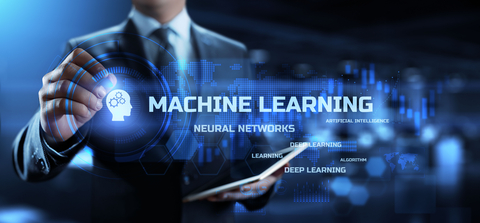
What do a 5-Year-Old Kid and Artificial Intelligence / Machine Learning have in common?
Today, we will discuss the value of Machine Learning supporting Artificial Intelligence compared to traditional application programming. Click Subscribe above to be notified of each edition.
We will also discuss a real case, comparing traditional and AI/ML approaches.
Finally, we will discuss some limitations of building effective ML/AI solutions.
This will not be a Technical Episode, but it will be accurate.
And it will be fun: simple and illustrative.
Let’s start!
What is Machine Learning (ML)?
The concept behind Machine Learning is to replicate the way infants learn in computational systems.
The end goal of Machine Learning and Artificial Intelligence is to allow a computational system to make predictions or decisions without being explicitly programmed to do so.
Typically, as infants get exposed to events and situations, they build relationships between these scenarios with previous experiences.
Let me give you an example:
Imagine you are driving with your family on a vacation trip, and suddenly you reach a beautiful landscape, and there is a bridge connecting two sides of a valley.
Imagine your family decides to take a break in a designated area, do a quick walk, and take a couple of pictures.
Suddenly, your youngest kid wants to take a picture with their mobile phone, and you recommend that they take a shot of the bridge.
Your son looks back and you and tells you, “Dad, I know what you mean, but this is not a bridge.”
You ask, “Why do you say that?”
“Because there is no river below, a bridge must have water below, and this is a dry valley!”
See? Your understanding of a bridge may not be the same as your kid’s interpretation: you have a mature capability (rules) to identify the object. The kids are still in learning mode, building rules and connecting the dots.
In the same way, a learning system (AI / ML) needs valid data with relevant rules and context. By analyzing the data multiple times, the system builds new rules and increases its capability to interpret recent events and situations, up to the point that it is capable of producing decisions or predictions about future events based on experience developed.
So, Jose, a computational system based on AI and ML, aims to find solutions to problems based on the learning process and not on a deterministic number of tasks.
Yeap!
Any example of traditional coding vs. AI/ML coding?
Use Case: Building an AI/ML solution for improving Customer Healthy Habits

Sure, imagine that you want to code an application that helps people create healthy menus.
Probably, a traditional approach would be a mobile app with multiple tables, collecting information on meals through barcodes or user inputs. The app would account for calories, nutritional value, affinity (main, side dishes), proportions, and goals to lose weight, gain muscle, gain weight, sleep quality, lower cholesterol, or whatever the user may decide. The app could provide a report that lets the user know the quality of their diet and their caloric deficits/surpluses for the day.
Right, and what would the AI/ML approach look like?
Imagine we have access to multiple grocery stores and restaurant chains, and we are “authorized” to use their data in conjunction with a picture of the purchaser.
We build a data training library consisting of food choices and general aspects of the buyer.
Imagine that the user takes a picture of himself as a starting point and selects a picture from a library as the desired outcome.
Such an application may have multiple levels of complexity and accuracy, depending on the quality of the information provided.
Case 1: Choice Analysis
As the user makes dietary choices, the system may tell the user the quality of their choices, comparing them with those chosen by the end goal benchmark user-persona.
Case 2: Eating recommendations while at public sites.
A more complex outcome would be to make valid recommendations based on user experience or data available from a restaurant chain. It could consider the users’ diet throughout the day and make meal suggestions that fit within their dietary goals.
Case 3: Increasing Accuracy by adding additional context (biometrical information)
Additional complexity may incorporate IoT devices into the scenario, like weight scales, biometric devices, or adding blood test results.
Imagine a solution that assists users in improving their health conditions affected by chronic conditions: High Blood pressure, Diabetes, Heart Conditions, and Sleep Disorders, among others.
Beautiful! But these solutions have some obstacles to overcome.
Machine Learning Challenges: Building an Effective Data Set for Training Purposes
This is an area of deep research on dealing with quality data. Two comments:
1. Sometimes, the data needed to train the solution is unavailable. Data privacy is an issue in this particular case, but other factors may be considered in other cases.
2. Sometimes, the information may be biased. It may be a consequence of the process followed to capture the data or some bias at the data source. Can you imagine if the restaurant chain says that all menu choices are healthy and appropriate for any customer, disregarding any chronic medical condition?
In general, there are hundreds of use cases where no private information is needed, so the chances of building practical training datasets (data lakes) are very attainable.
Maybe we can talk about these use cases in the next episodes.

Good enough?
What are your thoughts on the subjects raised in this edition of the Digital Acceleration Newsletter?
Share them in the comments below, and if you have ideas about other topics you’d like to see covered in this newsletter, feel free to add those suggestions as well.
